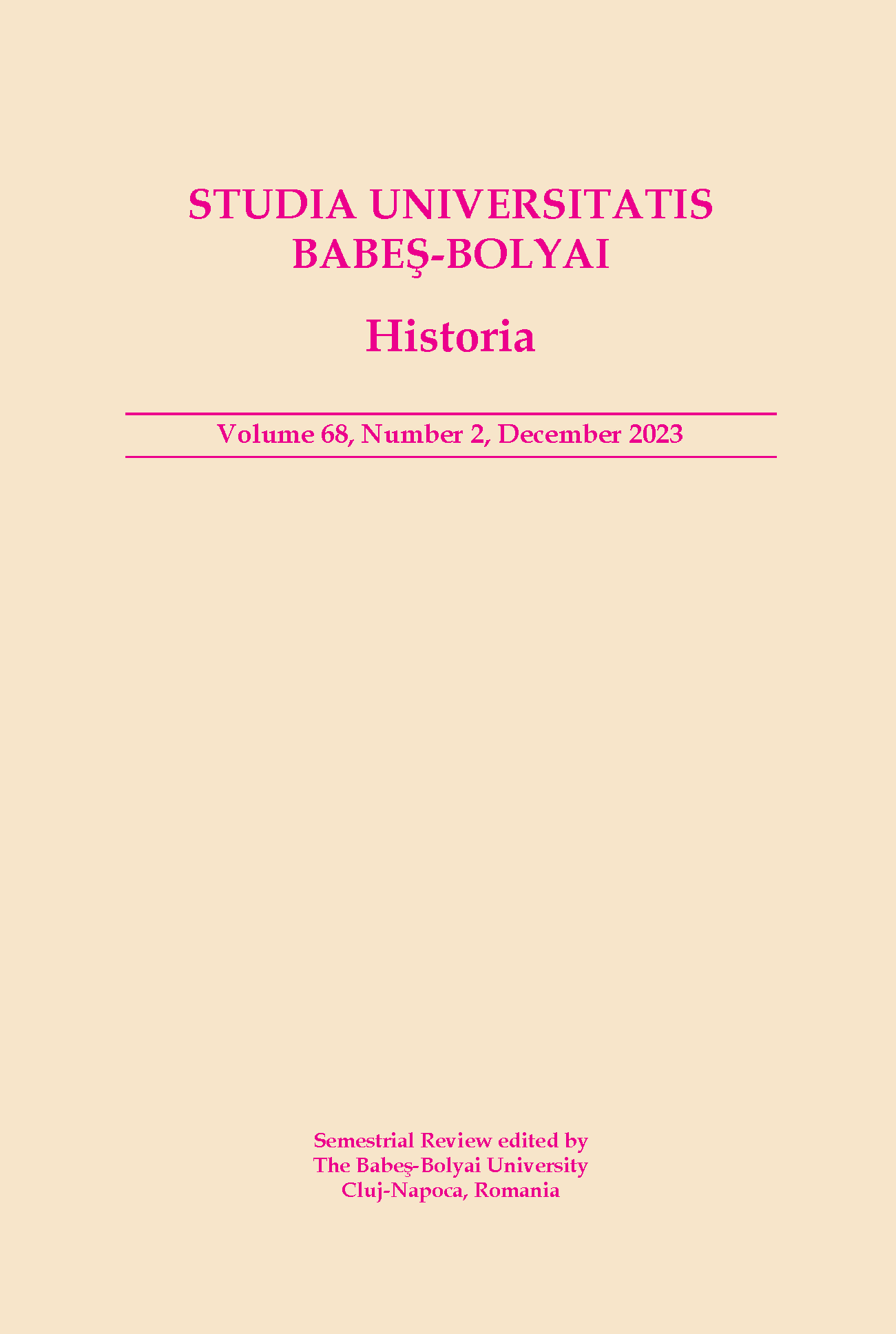Mutual Images of Romanians and Hungarians in Proverbs Collected in the Nineteenth Century
DOI:
https://doi.org/10.24193/subbhist.2023.2.03Keywords:
Romanians, Hungarians, proverbs, nineteenth century, historical imagologyAbstract
This article analyzes Romanian and Hungarian proverbs collected in the nineteenth century that convey images of the Other. These were published mostly in the masive collections of proverbs, sayings, and riddles edited by András Dugonics, Ede Margalits, and Iuliu Zanne. Proverbs speak first of all about the differences between “us” and “them,” about the negative traits of those around us, by which we identify ourselves and which highlight our superiority and “normality” in relation to dangerous and peculiar strangers around us. Peasants did not reflect on their neighbours in order to outline an objective portrait of them, but to display and reinforce their own cultural features, setting themselves apart from the strangers surrounding them. For this reason, they usually mocked and did not praise the Other. Mockery and ridicule were much more common than positive assessments, regardless of whether the relations between the two communities were good or bad. In this general framework, the popular images of the two peasant communities were agreeable and conveyed a sense of closeness and familiarity rather than a high degree of otherness, as was the case with the imagological relationships maintained with the Gypsies or the Jews.
Rezumat. Acest articol analizează proverbe româneşti şi maghiare culese în secolul al XIX-lea care transmit imagini ale celuilalt. Acestea au fost publicate în mare parte în colecţiile masive de proverbe, zicători şi ghicitori editate de András Dugonics, Ede Margalits şi Iuliu Zanne. Proverbele vorbesc în primul rând despre diferenţele dintre „noi” şi „ei”, despre trăsăturile negative ale celor din jurul nostru, prin care ne identificăm şi care ne evidenţiază superioritatea şi „normalitatea” în raport cu străinii periculoşi şi ciudaţi din jurul nostru. Ţăranii nu reflectau asupra vecinilor lor pentru a contura un portret obiectiv al acestora, ci pentru a-şi etala şi întări propriile trăsături culturale, deosebindu-se de străinii din jurul lor. Din acest motiv, de obicei i-au batjocorit şi nu l-au lăudat pe Celălalt. Batjocura şi ridicolul erau mult mai frecvente decât aprecierile pozitive, indiferent dacă relaţiile dintre cele două comunităţi erau bune sau rele. În acest cadru general, imaginile populare ale celor două comunităţi ţărăneşti erau agreabile şi transmiteau un sentiment de apropiere şi familiaritate mai degrabă decât un grad ridicat de alteritate, aşa cum era cazul relaţiilor imagologice întreţinute cu ţiganii sau cu evreii.
Cuvinte-cheie: Români, Maghiari, proverbe, secolul al XIX-lea, imagologie istorică
Article: history; Received: 19.02.2023; Revised: 03.11.2023 Accepted: 17.12.2023; Available online: 30.01.2024
Downloads
Published
How to Cite
Issue
Section
License
Copyright (c) 2024 Studia Universitatis Babeș-Bolyai Historia

This work is licensed under a Creative Commons Attribution-NonCommercial-NoDerivatives 4.0 International License.






